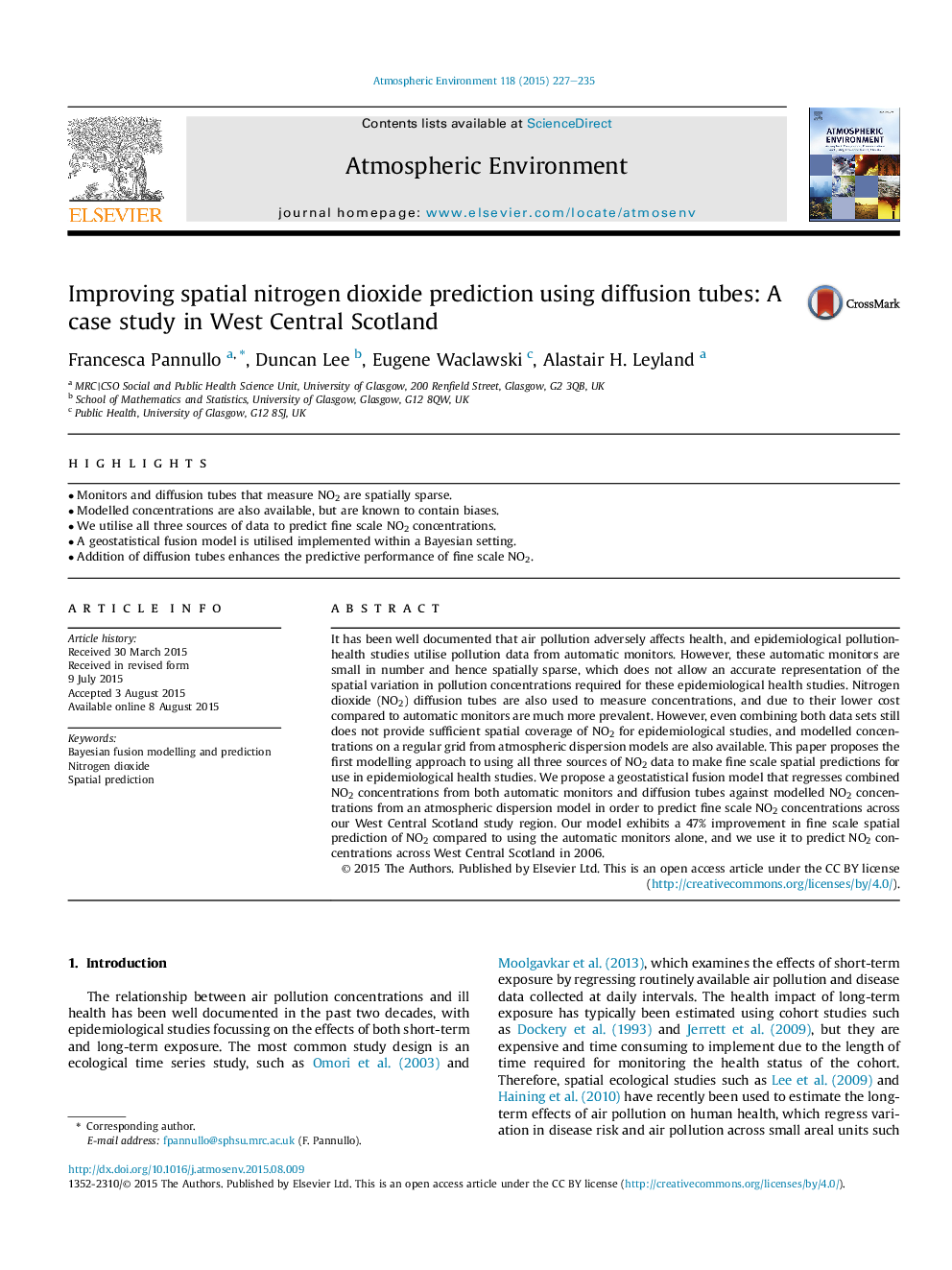| Article ID | Journal | Published Year | Pages | File Type |
|---|---|---|---|---|
| 6337599 | Atmospheric Environment | 2015 | 9 Pages |
Abstract
It has been well documented that air pollution adversely affects health, and epidemiological pollution-health studies utilise pollution data from automatic monitors. However, these automatic monitors are small in number and hence spatially sparse, which does not allow an accurate representation of the spatial variation in pollution concentrations required for these epidemiological health studies. Nitrogen dioxide (NO2) diffusion tubes are also used to measure concentrations, and due to their lower cost compared to automatic monitors are much more prevalent. However, even combining both data sets still does not provide sufficient spatial coverage of NO2 for epidemiological studies, and modelled concentrations on a regular grid from atmospheric dispersion models are also available. This paper proposes the first modelling approach to using all three sources of NO2 data to make fine scale spatial predictions for use in epidemiological health studies. We propose a geostatistical fusion model that regresses combined NO2 concentrations from both automatic monitors and diffusion tubes against modelled NO2 concentrations from an atmospheric dispersion model in order to predict fine scale NO2 concentrations across our West Central Scotland study region. Our model exhibits a 47% improvement in fine scale spatial prediction of NO2 compared to using the automatic monitors alone, and we use it to predict NO2 concentrations across West Central Scotland in 2006.
Keywords
Related Topics
Physical Sciences and Engineering
Earth and Planetary Sciences
Atmospheric Science
Authors
Francesca Pannullo, Duncan Lee, Eugene Waclawski, Alastair H. Leyland,
